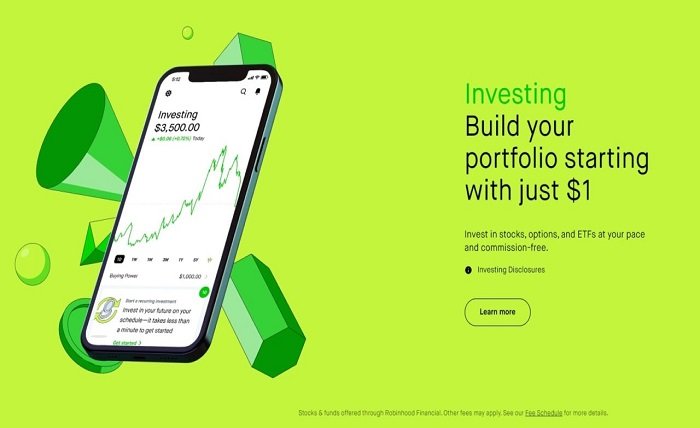Introduction
Premarket futures play a crucial role in guiding traders’ decisions before the opening bell rings. Understanding these indicators can provide valuable insights into market sentiment and potential price movements. In this comprehensive guide, we will delve into the intricacies of premarket futures, exploring their significance, how they work, and strategies for interpreting and leveraging them to your advantage.
What are Premarket Futures?
Premarket futures refer to trading that occurs before the official opening of the stock market. These futures contracts allow investors to speculate on the direction of the market before regular trading hours begin. By analyzing premarket futures, traders can gauge early market sentiment and anticipate potential price movements.
How do Premarket Futures Work?
Premarket futures are traded on electronic exchanges, such as the Globex system, which operates 24 hours a day. These contracts are based on major stock indices, such as the S&P 500, Nasdaq, and Dow Jones Industrial Average. Trading volumes during the premarket hours tend to be lower compared to regular trading hours, which can lead to increased volatility.
Importance of Premarket Futures
Premarket futures serve as leading indicators of market sentiment and can provide valuable insights into how the market may open. By monitoring premarket futures, traders can anticipate potential price gaps and adjust their strategies accordingly. Additionally, premarket activity can be influenced by global events and economic data releases, making it essential for traders to stay informed.
Factors Affecting Premarket Futures
Several factors can impact premarket futures, including economic indicators, geopolitical events, and corporate earnings reports. Unexpected news or developments overnight can cause significant shifts in premarket trading activity. Additionally, changes in investor sentiment and market liquidity can influence premarket futures prices.
Interpreting Premarket Futures Data
Interpreting premarket futures data requires a nuanced understanding of market dynamics and technical analysis. Traders often look for patterns and trends in premarket futures charts, such as support and resistance levels, to identify potential entry and exit points. Volume and price action during the premarket hours can also provide clues about market direction.
Strategies for Utilizing Premarket Futures
There are several strategies that traders can employ to leverage premarket futures effectively. One common approach is to use premarket levels as reference points for setting stop-loss and take-profit orders. Additionally, traders may use premarket data to gauge market sentiment and identify potential trading opportunities based on overnight news and developments.
Risks Associated with Premarket Trading
While premarket trading can offer opportunities for profit, it also comes with inherent risks. Due to lower trading volumes, premarket futures markets can be more volatile and susceptible to price gaps. Additionally, overnight news and events can lead to unexpected market movements, increasing the risk of losses for traders.
Tools and Resources for Monitoring Premarket Futures
There are various tools and resources available to help traders monitor premarket futures activity. Many online brokerages provide access to premarket quotes and charts, allowing traders to track premarket movements in real-time. Additionally, financial news websites and market analysis platforms often offer insights and commentary on premarket activity.
Common Mistakes to Avoid
When trading premarket futures, it’s essential to avoid common pitfalls that can lead to losses. One common mistake is overreacting to premarket movements and making impulsive trading decisions based on limited information. It’s important to maintain discipline and stick to your trading plan, even in the face of volatile premarket conditions.
Case Studies: Applying Premarket Futures Analysis
To illustrate the practical application of premarket futures analysis, we’ll explore real-world case studies of how traders have successfully utilized premarket data to inform their trading decisions. These case studies will highlight different strategies and approaches to trading premarket futures, providing valuable insights for traders of all experience levels.
Conclusion
Mastering premarket futures requires a combination of market knowledge, technical analysis skills, and disciplined execution. By understanding the significance of premarket indicators and employing effective trading strategies, traders can gain a competitive edge in the ever-changing financial markets. Stay informed, stay disciplined, and embrace the opportunities that premarket futures offer for informed decision-making and potential profit.
FAQ:
1. What time do premarket futures start trading?
- Premarket futures trading typically begins around 4:00 a.m. EST and continues until the stock market opens at 9:30 a.m. EST.
2. Can I trade premarket futures?
- Yes, premarket futures are available for trading on electronic exchanges such as the CME Globex system.
3. How do premarket futures affect regular trading hours?
- Premarket futures activity can influence market sentiment and potentially impact the opening price of stocks and indices when regular trading hours begin.
4. Are premarket futures reliable indicators?
- While premarket futures can provide valuable insights into market sentiment, they are not foolproof indicators and should be used in conjunction with other analysis tools.
5. What are the risks of trading premarket futures?
- Premarket futures trading carries risks such as increased volatility, price gaps, and the potential for losses due to unexpected news or events overnight. Traders should exercise caution and employ risk management strategies when trading premarket futures.






